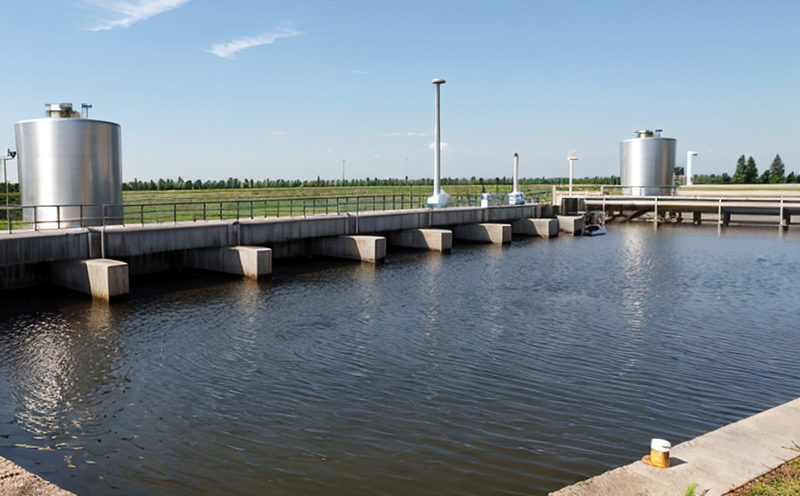WHO Guidelines Drinking Water Microbiological Safety Testing
The World Health Organization (WHO) guidelines on drinking water microbiological safety are among the most stringent and comprehensive standards for ensuring public health. These guidelines cover all aspects of microbial contamination in water, from source to tap, with a focus on safeguarding human health against disease-causing microorganisms.
Waterborne pathogens such as E. coli, Salmonella, Campylobacter, and Legionella are of particular concern. The WHO's microbiological safety testing protocols aim to detect these organisms through rigorous analytical methods that include membrane filtration, culture-based techniques, and molecular diagnostics. Compliance with these guidelines is crucial for water utilities aiming to provide safe drinking water.
The process typically begins with sample collection at various points in the distribution system. Samples are then transported under controlled conditions to a certified laboratory where they undergo microbiological analysis. The laboratory employs advanced instrumentation such as flow cytometry, PCR-based assays, and high-performance liquid chromatography (HPLC) for accurate detection.
Testing parameters include total coliforms, faecal coliforms, and pathogens like Giardia lamblia and Cryptosporidium. These tests are critical because they help identify potential risks associated with waterborne diseases such as typhoid fever, cholera, and giardiasis.
Compliance with WHO guidelines requires meticulous attention to detail throughout the testing process. This includes proper sample handling, accurate record-keeping, and adherence to international standards like ISO 16140 for coliform enumeration. The laboratory must also ensure that all personnel are trained in current best practices.
Testing results are reported promptly and transparently to stakeholders, including regulatory bodies and the public. This ensures swift action can be taken if any contamination is detected. By adhering to WHO guidelines, water providers can enhance their reputation for quality and reliability, thereby gaining a competitive edge in the market.
- Membrane filtration: Used for concentrating microorganisms from large volumes of water.
- Culture-based techniques: Identifying specific pathogens through growth on selective media.
- Molecular diagnostics: PCR and qPCR methods for rapid detection of pathogens.
Benefits
The implementation of WHO guidelines in drinking water microbiological safety testing brings numerous benefits to both the provider and the consumer. For water utilities, compliance enhances their reputation as a leader in public health and environmental stewardship.
Regulatory compliance is critical for avoiding fines and legal actions that can harm the business's financial stability. Moreover, it fosters trust among customers who value safe drinking water. Internationally recognized standards like ISO 16812:2017 ensure that the testing process meets global benchmarks.
On a broader scale, adhering to these guidelines contributes to public health by preventing outbreaks of waterborne diseases. This not only protects individual health but also reduces healthcare costs and improves overall community well-being. The WHO's emphasis on sustainable practices ensures that water resources are managed responsibly for future generations.
Water providers who comply with WHO guidelines can differentiate themselves in the market through their commitment to high standards of service quality. This is particularly valuable in competitive regions where reputation plays a significant role in customer retention and acquisition.
International Acceptance and Recognition
- The United States Environmental Protection Agency (EPA) recognizes WHO guidelines for assessing microbial quality of drinking water.
- The European Union's Drinking Water Directive acknowledges the importance of these standards in ensuring public health.
- Canada's National Microbiological Laboratory Endorsed Testing Methods incorporate WHO protocols.
The global acceptance of WHO guidelines underscores their significance in maintaining international standards for drinking water safety. Laboratories that adhere to these guidelines are recognized as providing the highest level of service, which is critical for global trade and partnerships.
Competitive Advantage and Market Impact
In today's competitive market, compliance with WHO Guidelines Drinking Water Microbiological Safety Testing can be a decisive factor in securing new contracts and maintaining existing ones. Water utilities that demonstrate their commitment to public health through rigorous testing are more likely to win the trust of potential clients.
By prioritizing quality and safety, water providers can enhance their brand image as reliable partners for municipalities, governments, and private organizations. This strategic focus not only strengthens existing relationships but also opens doors to new opportunities in international markets.
Adherence to these guidelines positions water utilities at the forefront of innovation and sustainability efforts. It signals a commitment to long-term environmental responsibility and public health, which are increasingly important factors for stakeholders and consumers alike.





